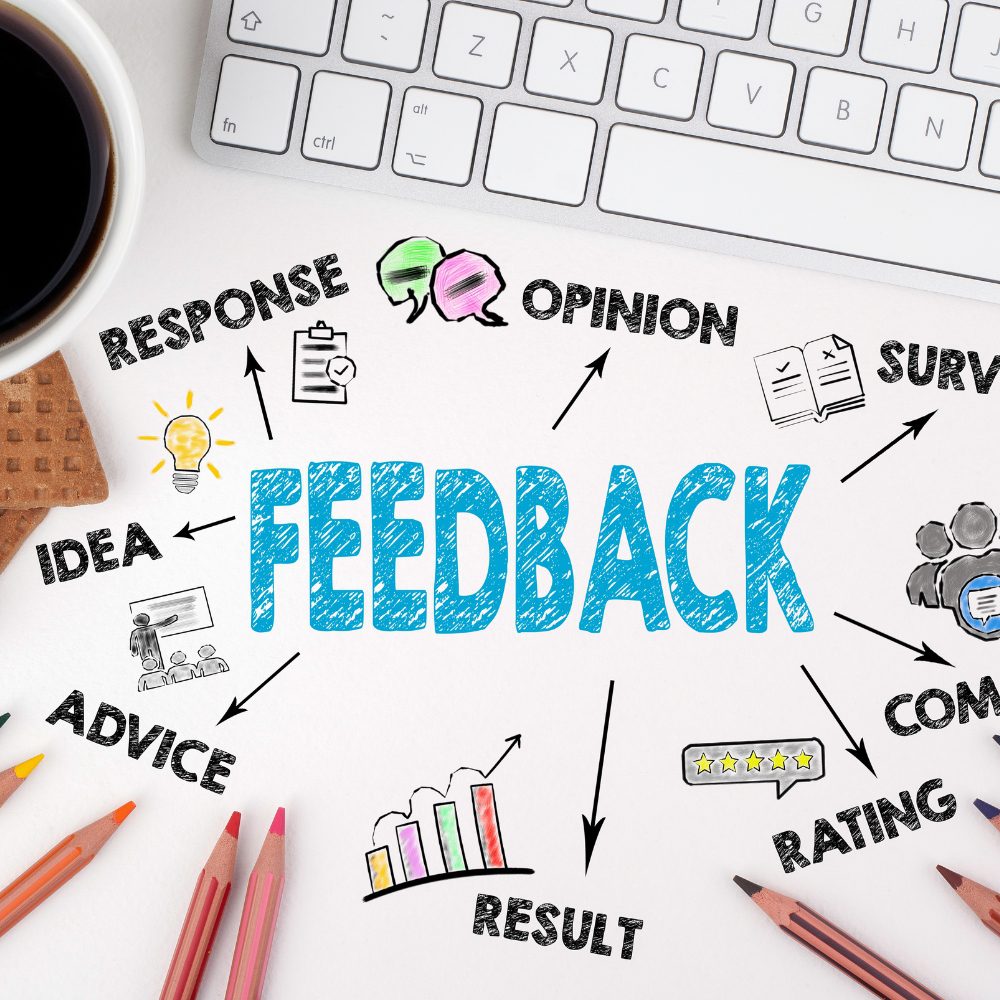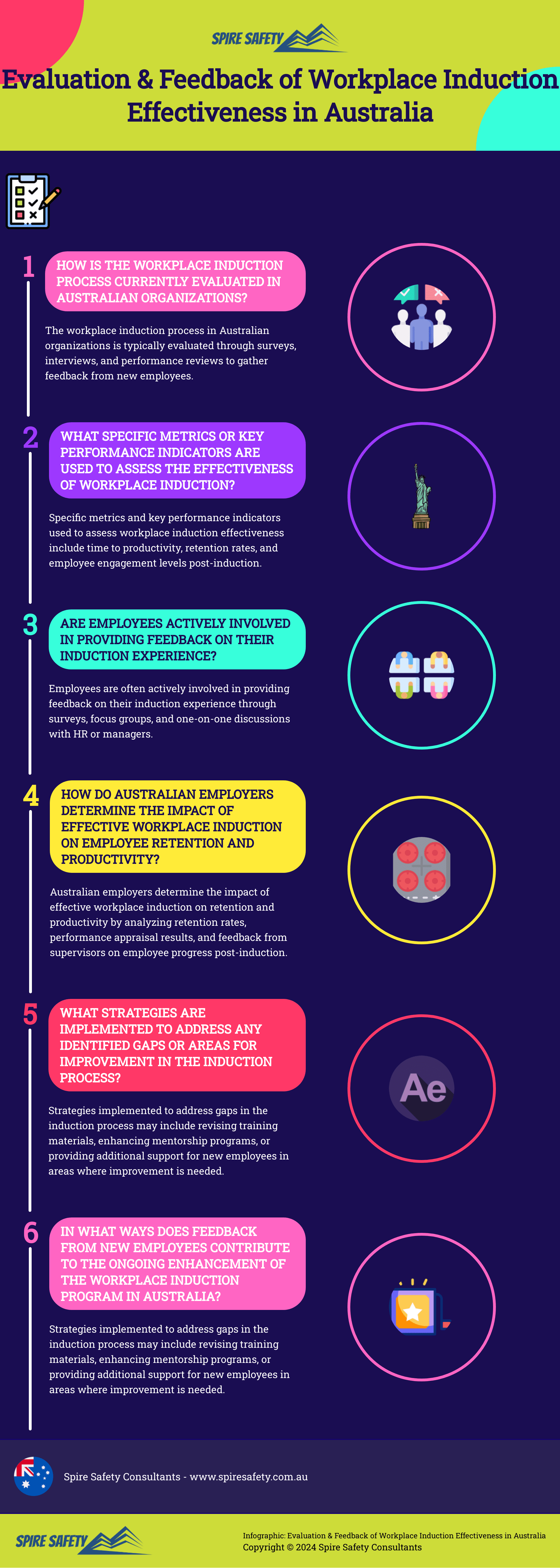Understanding the effectiveness of workplace induction in Australia demands a deep dive into the evaluation processes and feedback mechanisms. It is essential to recognize the impact of induction on new hires and the organization’s culture.
Through comprehensive evaluation, businesses can refine their induction strategies, ensuring that new employees are well-integrated, informed, and prepared for their roles.
Feedback plays a pivotal role in this process, serving as a critical tool for continuous improvement. By analyzing feedback from new employees, organizations can identify strengths and areas for enhancement in their induction processes.
This approach not only benefits the individual’s adaptation and growth but also contributes to the organization’s overall success and employee satisfaction.
The Significance of Effective Workplace Induction in Australia
An effective workplace induction is more than just a formality; it is a foundational step for integrating new employees into the culture and values of an organization. It introduces them to the company’s mission, ensuring they understand their role in achieving collective goals. This initial orientation is crucial for building a strong, cohesive workforce aligned with the company’s objectives and ethos.
Understanding Induction Training Meaning and Its Importance
Induction training is the first step in welcoming new employees into an organization. It’s about making employees feel welcomed and valued right from the start. This process is crucial for high job satisfaction and retention rates. Introducing new employees to the necessary tools and information, significantly reduces errors and accidents, setting the stage for a smooth transition into their roles.
The Benefits of Induction Training for New Employees
Induction training is key in bringing new employees up to speed. It helps them understand the company’s history and culture, which makes them feel part of the team. They learn about their roles and the essential skills needed for their jobs. This foundation is vital for their success and the organization’s growth.
Enhancing Employee Engagement and Retention
Effective induction covers the company’s culture and values, making staff members feel valued and connected. By providing aid facilities and resources, it fosters a supportive environment. This approach not only enhances employee engagement but also plays a crucial role in retaining top talent within the organization.
Boosting Productivity Through Well-Informed Employees
Well-informed staff members are a company’s greatest asset. Through induction that covers essential aid facilities and systems, employees are better prepared to tackle their roles efficiently. This preparation boosts overall productivity by ensuring all team members are on the same page from day one.
Constructing an Effective Induction Program
An effective induction program is tailored to both the role and the organization. It includes an introduction to the company’s culture and values, alongside comprehensive training on job responsibilities and safety procedures. Such a program lays a solid foundation for new employees, aligning them with the company’s goals from the outset.
Components of an Effective Induction Training Programme
An effective induction program comprises several key components. It introduces employees to the company’s systems and their specific roles. The program encourages employees to ask questions, ensuring clarity and understanding. This inclusive approach paves the way for a smooth transition into their new environment.
Key Components of an Effective Workplace Induction Program
The foundation of an effective workplace induction program lies in a comprehensive overview that includes the company’s history, mission, and values. It is crucial to detail the new employee’s role and responsibilities, along with providing essential health and safety training. This holistic approach ensures employees are well-prepared and aligned with the company’s objectives.
Steps to Develop an Induction Program
Developing an induction program starts with identifying the goals and expectations for new hires. This involves creating a detailed induction plan that covers the company’s history, culture, and the employee’s specific role. By outlining clear objectives and providing the necessary resources, organizations can ensure a successful onboarding experience for new employees.
Following-Up for Continuous Improvement
Following up after the formal induction period is essential for assessing the effectiveness of the induction process. It allows for adjustments to be made based on feedback, ensuring that future inductions are even more successful. This continuous improvement benefits both the organization and its new members.
Challenges and Solutions in the Induction Process
Every induction process faces its set of challenges, from ensuring comprehensive coverage of policies and procedures to fostering a welcoming workplace culture. Solutions often involve leveraging technology, like online learning modules, and tailoring induction content to meet the specific needs of new hires. Addressing these challenges head-on ensures a smoother transition for everyone involved.
Encouraging Social Interaction as Part of the Induction Process
Social interaction is a critical component of an effective induction process. It helps new hires build relationships with their colleagues, fostering a sense of belonging and team cohesion. By incorporating team-building activities and opportunities for informal interactions, companies can create a more inclusive and supportive workplace environment.
Leveraging Technology in Induction Training
Technology plays a pivotal role in modern induction processes. It enables organizations to provide comprehensive training on policies and procedures efficiently. Through online learning modules, new employees can learn at their own pace, making the induction process more flexible and accessible. This approach contributes to a positive workplace culture and operational efficiency.
How to Use eLearning for Induction Training
eLearning has revolutionized the way induction training is delivered. By setting clear learning objectives and utilizing management systems, organizations can create engaging training sessions. Evaluating the effectiveness of these sessions ensures that the induction process is continuously improved, meeting the evolving needs of the organization and its new employees.
Bespoke eLearning Solutions for Effective Inductions
Bespoke eLearning solutions tailor essential skills training to meet the specific needs of new hires, ensuring a smooth transition into their roles. By customizing content, businesses can address the unique aspects of their operations and culture, making the induction process more relevant and engaging for employees. This personalized approach not only accelerates the learning curve but also enhances the overall effectiveness of the induction program.
The Best Learning Management Systems (LMS) for Induction Training
Choosing the right Learning Management System (LMS) is vital for delivering effective induction training sessions. These management systems serve as the backbone for eLearning programs, offering features that help businesses evaluate the effectiveness of their training. They provide a platform for organizing, tracking, and managing induction activities, ensuring that new employees receive a comprehensive introduction to their roles and the company.
Highlighting Top Platforms: Moodle, TalentLMS, and LearnUpon
Moodle, TalentLMS, and LearnUpon stand out as top platforms for creating and delivering induction training. Each offers a range of tools and features designed to facilitate the learning process, from customizable course content to analytics for tracking progress. By leveraging these platforms, businesses can provide an interactive and engaging learning experience that equips new hires with the knowledge and skills they need for success.
Ensuring Legal and Safety Compliance
Ensuring legal and safety compliance is a crucial component of any workplace induction program. It involves educating new employees about the health and safety regulations applicable to their roles and the broader organizational policies. This not only helps in minimizing workplace accidents and legal disputes but also fosters a culture of safety and compliance within the organization.
WHS Training Programs for the Modern Workplace
Workplace Health and Safety (WHS) training programs are essential for modern workplaces, aiming to acquaint employees with safety practices and legal obligations. This foundational knowledge is crucial for preventing accidents and ensuring a safe working environment for everyone.
Specialised Safety Advice for Diverse Clients
Offering specialised safety advice tailored to diverse clients ensures that every employee, regardless of their role or industry, understands how to maintain a safe working environment. By integrating a variety of training methods throughout the induction period, businesses can address specific risks and reinforce the importance of safety protocols. This customized content and delivery approach enhances the effectiveness of WHS training.
Delivering Innovative Solutions for WHS Compliance
Innovative solutions for WHS compliance are key to addressing the unique challenges of modern workplaces. By leveraging the latest technologies and methodologies, businesses can create dynamic and engaging safety training that resonates with new hires. These solutions not only help in meeting legal requirements but also in building a safety-first culture within the organization.
Evaluating the Effectiveness of Workplace Induction
Evaluating the effectiveness of workplace induction is crucial for ensuring that new employees feel welcomed and that retention rates are high. This process involves assessing how well the induction program prepares employees for their roles, and making necessary adjustments to improve future iterations.
Methods and Tools for Gathering Feedback
Gathering feedback through various methods and tools is essential for understanding the impact of the induction program. This feedback provides insights into the areas that are working well and those that need improvement, enabling organizations to continuously enhance their induction processes.
Surveys, Interviews, and Performance Metrics as Evaluation Tools
Surveys, interviews, and performance metrics serve as powerful evaluation tools for assessing the effectiveness of induction programs. They enable businesses to collect valuable feedback from new hires, gauge their initial performance, and identify opportunities for improvement. By analyzing this data, organizations can refine their induction strategies for better outcomes.
Case Studies: Successful Induction Programs in Australia
Examining successful induction programs in Australia provides valuable insights into best practices that can be adopted by other organizations. These case studies highlight the importance of a comprehensive onboarding process that includes mentorship, technology integration, and a focus on organisational culture.
Analyzing Real-World Examples for Best Practices
By analyzing real-world examples, businesses can identify the key elements of successful onboarding processes, such as aligning the induction program with organisational culture, setting clear goals and expectations, and providing ongoing support. These practices play a significant role in ensuring a positive and effective induction experience for new employees.
Advanced Strategies for Workplace Induction
Implementing advanced strategies for workplace induction can significantly enhance the onboarding experience. By focusing on innovative approaches and leveraging technology, businesses can ensure that new hires are effectively integrated into their roles and the company culture.
Simulations and Interactive Training for Employee Onboarding
Simulations and interactive training have emerged as effective strategies for employee onboarding. These methods provide practical learning experiences that can accelerate the transition of new hires into their roles, making the induction process more engaging and effective.
Utilizing Simulations for Practical Learning Experiences
Utilizing simulations as part of the induction process allows new employees to gain hands-on experience in a controlled environment. This practical approach to learning helps in reinforcing essential skills and knowledge, ensuring that new hires are well-prepared for the challenges of their roles. By integrating simulations, businesses can create a more dynamic and effective induction experience.
Custom Content Development for Targeted Training
Creating custom content for induction training is key to addressing the unique needs of each new employee. By tailoring the material to align with company policies, workplace culture, and business operations, organisations can ensure that new starters are well-informed about their roles and responsibilities. This approach not only helps in outlining the specific policies and procedures but also in setting clear expectations related to the company goals and objectives. The structured induction process, enriched with custom content, significantly contributes to a smoother transition for employees into their new workplace environment.
Modern Platforms and Tools for Engaging Training Content
Innovative platforms and tools have revolutionized the way training content is delivered, making it more engaging and accessible. By leveraging technologies such as interactive videos, gamification, and virtual reality, trainers can create immersive learning experiences that ensure new employees understand the crucial policies and procedures. These modern solutions not only captivate the learner’s attention but also enhance their understanding and retention of the information, thereby making the induction process more effective and enjoyable.
Conclusion: Elevating Workplace Induction to New Heights in Australia
The effectiveness of workplace induction programs in Australia has evolved to become a pivotal element in fostering a welcoming and productive environment. These programs, designed to make new employees feel valued and equipped, play a significant role in reducing turnover rates and enhancing job satisfaction. The incorporation of tailored information, alongside tools necessary for role performance, minimizes errors and promotes a safer workplace. As such, elevating the standards of induction training is crucial for the sustained success and growth of organisations across Australia.
Summarizing Key Takeaways and Future Trends in Induction Training
Induction training programs serve a vital role in acclimating new hires to their roles and the organisation’s culture. The future trends in induction training point towards a more personalized approach, incorporating training programs tailored to specific job functions. The emphasis on risk assessment and WHS induction, coupled with providing safety training, underscores the commitment to employee wellbeing. These elements are instrumental in creating a comprehensive onboarding experience that aligns with the company’s objectives and values.
The Continuous Evolution of Induction Training and Technology Integration
The landscape of induction training is continuously evolving, with technology playing a central role in its transformation. The integration of digital tools has made it easier for organisations to disseminate information related to policies and procedures in an engaging and effective manner. As technology advances, so does the potential for creating more interactive and immersive induction experiences. This evolution is crucial for meeting the changing needs and expectations of the modern workforce, ensuring that employees are well-prepared and motivated from day one.
The Role of Feedback in Refining Induction Processes
Feedback serves as a cornerstone in the continuous improvement of induction processes. By actively seeking and incorporating input from new employees, organisations can identify areas of strength and opportunities for enhancement. This iterative process ensures that the induction program remains relevant, effective, and aligned with the evolving needs of both the organisation and its workforce. Emphasizing the importance of feedback not only enriches the induction experience but also fosters a culture of open communication and continuous learning.
FAQ
1. What is the purpose of workplace induction programs? Workplace induction programs are designed to introduce new employees to the organization, its culture, policies, and procedures, ensuring they have the necessary knowledge and skills to perform their job safely and effectively. [1]
2. What are the key components of an effective workplace induction program? Key components include introducing company culture and values, health and safety procedures, job responsibilities, training opportunities, communication channels, and feedback mechanisms. [2]
3. How can employers evaluate the effectiveness of their workplace induction programs? Employers can evaluate effectiveness through feedback from participants, assessing knowledge retention, observing job performance, and reviewing program outcomes against objectives. [3]
4. What are some common challenges in designing effective workplace induction programs? Common challenges include time constraints, ensuring engagement, prioritizing critical information, and addressing diverse learning styles. [4]
5. How can technology be used to enhance workplace induction programs? Technology can be used to deliver interactive online inductions, provide virtual tours, and offer access to resources and support materials, enhancing the learning experience. [5]
6. What role does feedback play in improving workplace induction programs? Feedback from participants helps identify areas for improvement, ensuring that the program remains relevant and effective over time. [6]
7. How can workplace inductions be tailored to meet the needs of different learners? Workplace inductions can be tailored by using a variety of training methods, providing additional support where needed, and considering the individual learning styles and preferences of participants.
8. What legal requirements exist for workplace inductions in Australia? In Australia, workplace inductions must provide information on employee rights, health and safety procedures, and any other relevant legislative requirements. [8]
Advice & Actionable Tips
- Conduct a thorough needs analysis to understand the specific requirements of your workplace and employees.
- Design engaging and interactive materials that cater to different learning styles.
- Implement the program effectively by delivering materials and providing support to participants.
- Evaluate the program regularly through feedback to ensure it remains effective and relevant.










